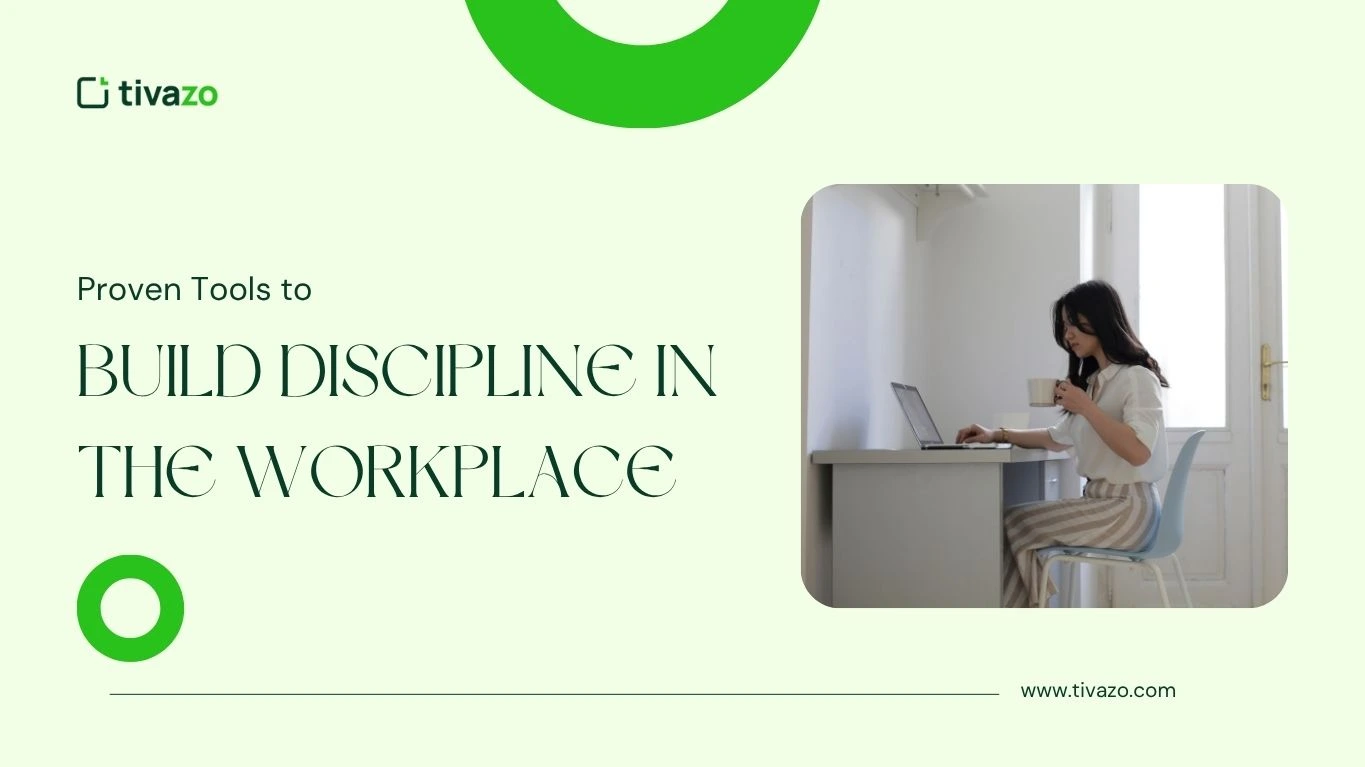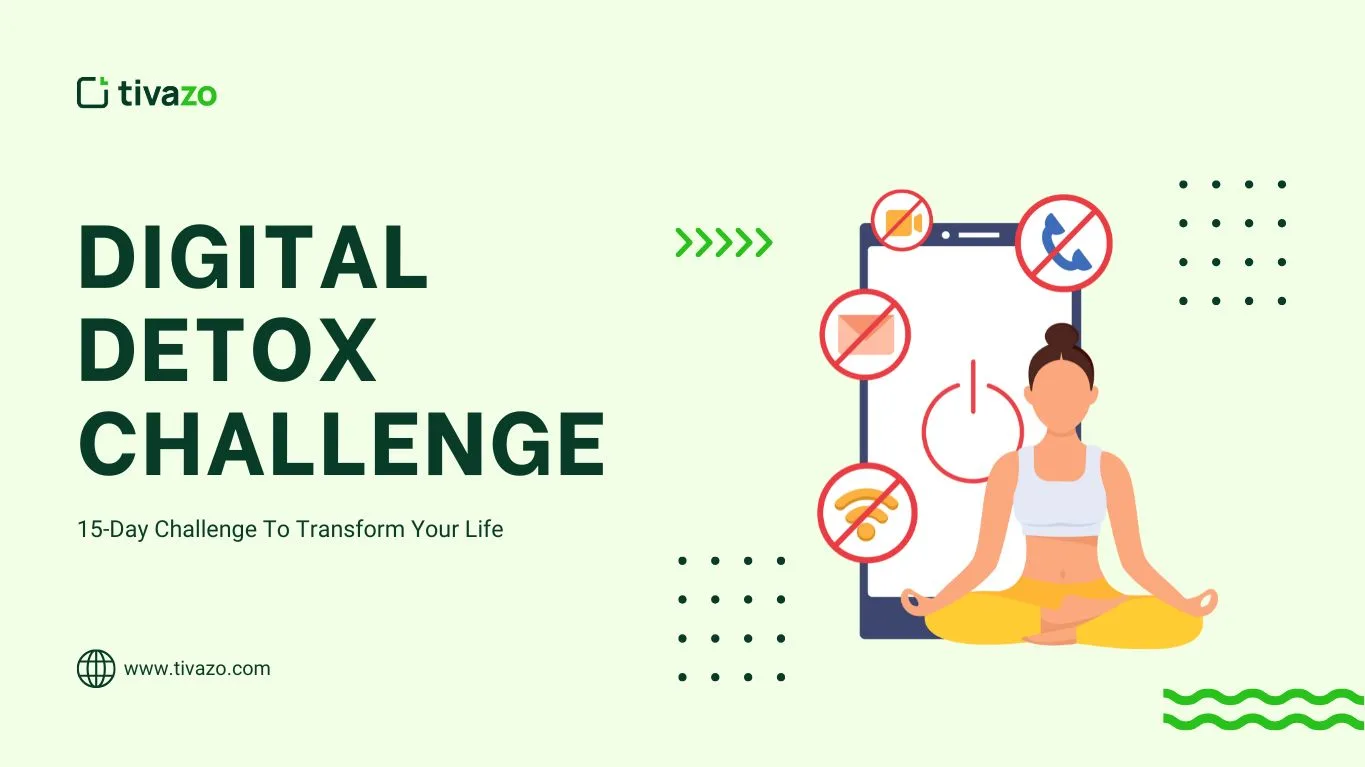Control in the workplace, like life close to it, is not about punishment — it’s about building trust, clarity , and accountability. Many managers feel stuck between micromanaging and team chaos. Employees often report that they feel like there is too much scrutiny and are demoralized. The good news? Contemporary discipline methods make it possible for managers and their teams to nurture discipline with the absence of fear. This blog will be your key resource to become an expert in workplace monitoring and boost your team’s productivity with the perfect tool.
Key Highlights:
- What is Discipline in the Workplace
- 6 Best Discipline in the Workplace Tools to Build Trust
- Key Benefits of Using Discipline Tools in the Workplace
- Common Mistakes Managers Make When Enforcing Discipline
- How Tivazo Ensures Privacy and Builds Trust
What is Discipline in the Workplace?
When it comes to work, “discipline” encompasses behaviors as well as systems and processes that make sure that employees are at par with the company’s expectations, they are adhering to policies, and they maintain a reasonable level of output.
But discipline is also more than just following rules. It’s a matter of consistency, self-management, and fairness.’ An organization of self-discipline, trust, transparency, and accountability without micro-management.
Why Discipline in The Workplace Often Fails
Most have not worked and here’s why:
- Managers are using antiquated manual tracking.
- Communication of expectations is bad.
- Instead, the policies have a punitive, not supportive, mindset.
Without the right tools, managers risk either micromanaging or losing control entirely.
6 Best Discipline in the Workplace Tools to Build Trust
6 Best Disciplines in the workplace are:

1. Tivazo
Tivazo’s main strength is in effectively enforcing punctuality without being unsettling or invasive. Rather than monitoring every click you make, it keeps an eye on your actual work hours and registers idle time to help managers see productivity gaps without impinging on privacy. From a transparency standpoint, tracking and screenshots are in real-time, to help keep everyone accountable, and most importantly, in a complimentary, easy, and employee-friendly way.
Its easy-to-use dashboards enable teams to learn together to better themselves and the projects they are building, and integrations with popular project management tools mean discipline suggests itself to fit seamlessly into the processes and work that is already being done, all building trust and helping to cultivate a culture of teamwork.
2. Google Workspace
Discipline must be clear and communicated well. Google Workspace’s calendars, emails, and task lists help teams stay organized and aligned. Organized calendars minimize confusion and aid in planning dedicated working hours, and to-do lists nail down tasks and maintain deadlines. With well-designed email flows, critical information makes its way to the right people in a timely manner. Combined, these tools work to establish a discipline in the workplace where results are achieved and productivity increases.
3. Asana
Asana provides order to hectic projects by keeping tasks and deadlines in sight for all. This also lets managers clearly allocate responsibilities, order priority, and oversee how things are progressing, in real time. Splitting projects into phases will not only avoid overwhelm but also keep your team on track. This visibility keeps accountability and teamwork at the forefront, and Asana is a crucial part in maintaining discipline in the workplace.
4. Grammarly
Much of discipline is focused on respectful, clear communication. Grammarly does more than a regular spell check to make sure your messages, documents, and social media posts are clear, mistake-free, and impactful. Clear, respectful communication helps avoid misunderstandings and resentment, and it fosters a positive culture where feedback is welcome and discipline in the workplace feels constructive, not punitive.
5. Jira
For technology and development teams, Jira enforces discipline in the workplace with its organized workflows, such as sprints and backlogs. It also serves to identify bugs and features, and monitor progress, assisting teams in getting back on track and fixing problems. The transparency in Jira helps managers identify bottlenecks quickly and intervene where they can make the most impact without resorting to micromanagement, even in fast-moving spaces.
6. HR Partner
Policy Follow-up and Documentation Consistency in their Documentation and follow-up is crucial for equality and the Law. Agree continues to put warning, evaluations, and policy enforcements on HR Partner. Maintaining cohesive, organized records promotes transparency, and it protects the company and the employees, which underlines a disciplined, responsible work environment.
The Cost of Poor Discipline in the Workplace
When discipline in the workplace is missing in the workplace, the repercussions can spread much further than unfinished tasks. Teams can lose focus when the expectations are not set and there is a lack of accountability, and soon the company will start to feel the pain across the board. Bad conduct causes a landslide loss of productivity, tension among workers, and is fertile ground for inefficiency. Managers are putting out problems rather than moving work forward, and employees feel left out or undervalued.
Gradually, they add up to a poisonous cycle that corrodes company culture, wrecks a brand’s reputation, and smacks the bottom line hard. These costs are not easy to quantify, but they’re the ones leaders need to consider if they want to build disciplined, high-performing units.
Lack of discipline in the workplace leads to:
- Missed deadlines and low output.
- Increased employee turnover.
- Some workers said morale was low and conflict was prevalent in the workplace.
- Loss of income from being unproductive.
Key Benefits of Using Discipline Tools in the Workplace
The most effective discipline tools are not simply time trackers—they are instruments for building a culture of trust and accountability. In offering transparency about how time is used, the tools enable workers to better control their work, while enabling bosses to lead with more confidence. Remote or in-office, proper tools promote fairness, level up communication, and enhance overall productivity for teams. The following are some of the primary advantages businesses achieve through discipline solutions:

- Boosts Productivity: Enables you to recognize inactivity and encourages team members to stay on target.
- Builds Trust: When monitoring traveling is not hidden, it encourages accountability without making employees feel like they are being watched.
- Enhances Autonomy: Encourages employees to be more independent in their use of time and work patterns.
- Improves Communication: It offers clean, objective information that can be used constructively to give feedback and coaching.
- Supports Remote Work: Works well with remote and hybrid teams due to real-time updates.
- Reduces Micromanagement: Provides data points that allow managers to manage by trust, not control.
Remote Teams: Why Traditional Discipline Doesn’t Work Anymore
Traditional discipline methods were designed for offices where managers can see and interact with their teams face-to-face. But in today’s remote and hybrid work environments, these old approaches simply don’t fit. Visibility into what employees are doing is limited, making it harder to ensure everyone stays on track. Time zone differences add another layer of complexity, as teams work asynchronously and managers struggle to hold everyone accountable fairly and consistently. Relying on micromanagement in this setting often backfires, breeding resentment and mistrust rather than motivating improved performance.
The key to solving this challenge lies in adopting modern tools like Tivazo, which offers real-time, transparent tracking designed specifically for remote teams. Tivazo provides managers with accurate insights into work patterns while respecting employee autonomy, fostering fairness and clarity without feeling invasive or like surveillance. This balance helps remote teams maintain discipline in the workplace organically, building trust and boosting productivity even when miles apart.
Common Mistakes Managers Make When Enforcing Discipline in the Workplace
Many managers struggle with discipline because they fall into simple but harmful habits. They do not empower their teams; they micromanage. They don’t always clearly record expectations or results, and there are times when they miss key feedback from employees. These mistakes erode trust and undermine discipline. The point is that it is possible to avoid these pitfalls by using clear tools that provide the semblance of trust and a simplified tracking service

- Micromanagement rather than empowerment.
- Failure to make expectations and conclusions explicit.
- Ignoring employee feedback.
How to Introduce Workplace Discipline Tools Without Employee Resistance
The new discipline feature, such as Tivazo, may sometimes raise employees’ issues about privacy or too much control. Openness is the key to a great adoption. Instead of presenting this set of tools as “monitoring,” treat them as empowerment tools that allow your employees to take control over their own time and productivity. As you describe how Tivazo supports self-management by offering transparent views of work patterns instead of spying on each move, employees will feel respected and engaged, not surveilled. The other is promoting free speech.
Welcome feedback and pay attention, and be prepared to iterate on the process with team input. It turns what might be resistance into an alliance, an ethos of trust and shared responsibility. Employees who understand the “why” are far more likely to adopt discipline tools with an open heart and mind.
How to Enforce Discipline in the Workplace Without Micromanaging
Managers everywhere agree on one thing: Real discipline flourishes on clarity and autonomy, not constant supervision. The first is to establish clear, measurable expectations so everyone is aware of what success looks like. During times like right now, digital instruments such as Tivazo are so beneficial because they monitor the passage of time and actively digitize productivity without spying on personal habits or people. That means managers don’t have to drill down to the interaction level–they can instead look at rich dashboards that show trends and areas of improvement.
Managers can concentrate on coaching and developing their teams, rather than wearing them down with check-ins every 15 minutes. This approach is effective because it treats employees as responsible professionals, not suspects under constant watch. Discipline, then, is a natural part of daily operations when the team feels supported and empowered; it costs, well, nothing, and it has the potential to improve productivity, morale, and workplace culture.
Why This Works: This Works: Staff feel coached, not micromanaged.
How Tivazo Ensures Privacy and Builds Trust
Privacy is paramount in the workplace today. Workers may fear that they’re under scrutiny as if they’re already suspected of something, which can undermine trust and morale. Tivazo is addressing this with transparent data policies and letting people manage their data. And with features like optional screenshots and clear visibility into what’s being tracked, nobody is blindsided or spied on. This transparency creates a culture in which discipline in the workplace feels fair and empowering, not invasive. So when teams rely on their tools, discipline comes naturally without bitterness.
Overcoming Resistance: Common Employee Concerns and How to Address Them
Resistance can be invited by the introduction of any discipline tool. Workers might worry about being micromanaged or about losing privacy. Managers need to collaborate with their teams to communicate openly and honestly, and thus relieve those concerns. Tivazo, tell him, is about time discipline, not personal behavior monitoring. Note that screenshots are optional and are shown to the user. Deal with issues empathetically – letting them know that it’s about assisting productivity and autonomy, not about punishment. This openness quells fear, and resistance is transformed into acquiescence.
Conclusion: Trust, Transparency, and Time Discipline Start with Tivazo
Workplace discipline is not about policing — it’s about empowering. Tivazo is an innovative way for managers and their teams to establish accountability and productivity in a culture of trust.
Start Your Free Demo with Tivazo Today: Build Trust, Track Time, Empower Teams.




